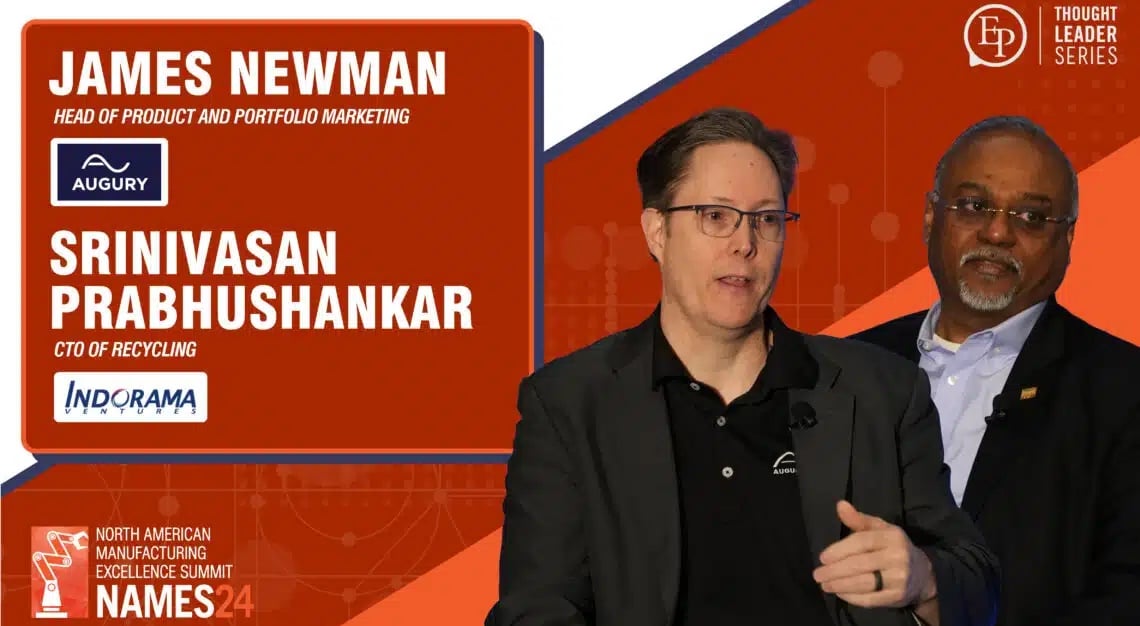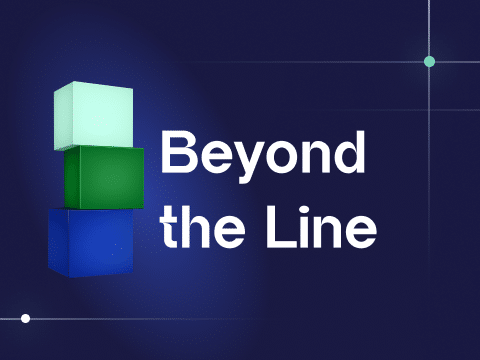
Too many manufacturers are still dragging their feet on going digital by using a variety of excuses: insufficient skilled labor, leadership churn, too mom-and-pop, contrasting maturity levels across sites, etcetera. However, the digital success story Indorama took these types of excuses as reasons to embrace an AI-driven solution. “It’s about flipping perspectives,” writes James Newman, Augury’s Head of Product and Portfolio Marketing. “Why think digital is too far off when it can tell you where to focus right now?”
There Will Be No Happy Ending Without Digital
As always, the NAMES conference was inspirational. So, I was surprised I still had too many conversations with manufacturers holding back on digital solutions – even when they knew these could bring significant value.
Without exception, they were bogged down by a myth and often several myths: that they are still too mom-and-pop, that their organization is already going through too much flux, that they don’t have the people to make it happen, etcetera. Meanwhile, they offered these kinds of excuses while they also happened to be the country’s largest producer of such-and-such a product!
Well, they won’t be the largest producer of such-and-such for long since their AI-embracing competitors will squeeze them out soon enough.
[Full disclosure: these conversations make me grumpy.]
It was about a company that recognized its challenges, flipped some perspectives, found the solution that fit it best, and then went on to enjoy success. It is currently scaling across its portfolio.
Why Not Go Digital?
Happily, I was part of the fireside chat ‘Overcome Uncertain Times – Digitally Enabled Transformation to Drive Business and Workforce Success’, which told the other side of the story. It was about a company that recognized its challenges, flipped some perspectives, found the solution that fit it best, and then went on to enjoy success. It is currently scaling across its portfolio.
[Another full disclosure: it was Augury’s Machine Health Solution that paved their way.]Failing To Take Off
Srinivasan “Shankar” Prabhushankar is the CTO for Recycling at Indorama Ventures, a global chemicals manufacturing company and the world’s largest producer of PET resins. The $20 billion company has about 140 manufacturing sites in about 40-plus countries on all six continents and about 15 recycling sites where PET material is recycled back into pellets that can be used to make more packaging.
Shankar explained how the company long faced a Sisyphus situation: pushing another tech solution up the cliff of employee indifference only to see it roll back down. Each time, they couldn’t get people to adopt, and they couldn’t figure out why. “We knew there had to be a better solution,” says Shankar. And to his credit, he sat down with the company’s digital team to determine what that solution should look like.
Defining The Problem
“The major thing was that our operating rates were so low that we were constantly reactive – fighting whatever fire came up. We needed immediate help. So, the system had to be simple to implement – and not take months to install,” says Shankar.
“The second thing is we did not have strong site leadership teams in the maintenance department. There was a lot of churn. So, the solution needed to be quick to learn not just by the plant floor but also their supporters in C-Suite. The solution should also ideally be backed by a vendor’s Customer Success team to also help drive our engagement. Those were my main concerns,” says Shankar. “And our digital team had their own criteria: that we needed a collaborative, adaptable platform with an architecture that’s easy to scale.”
Machine Health fit the bill. The impact on the initial site in Dallas was almost immediate. Over six months, they saw a 17% improvement in the unscheduled downtime. “And over the course of 9 to 10 months, we calculated $452,000 costs saved – about a 13 times ROI,” says Shankar. Meanwhile, over the last year, the response time has gone from an average of three days to 1.3 days, and the response rate has gone from 87% to 97.4%.
In other words, they turned what some people use as excuses into measurable wins.
The Dallas site experienced an almost complete change in on-site leadership. Meanwhile, the operators who became part of the reliability team had no background in reliability. Yet it worked.
Flipping Perspectives
1) Your Worst Site Likely Has The Most To Gain
We know the more prominent manufacturers often tout their lighthouse factories as leading the way toward a digital future. Why not flip this idea and test your potential solution on your worst site? Indeed, Indorama’s pilot site in Dallas was rated as one of their worst-performing sites, with no predictive maintenance system, lots of unplanned downtime, and various labor and leadership turbulence.
“I’d call this our key learning: if we could drive results with such strong ROI with our least reliable site, and one which was experiencing significant turnover, then any other site with significant opportunity should be able to succeed as well.”
This turned out to be true. “The digital solution also works on our more reliable sites,” says Shankar. “Our reliability engineers there said it causes them to watch assets more closely and improve as an engineering team.”
2) In Times Of Flux, You Can Still Succeed
As mentioned, the Dallas site experienced an almost complete change in on-site leadership. Meanwhile, the operators who became part of the reliability team had no background in reliability. Yet it worked.
So how did they achieve 13x ROI despite these handicaps?
According to Shankar, it was thanks to a perfect triple play. As personified by Shankar, the executive level of the organization provided top-down support and oversaw the change management. It was essential that they stayed committed to solving the problem. In fact, Shankar himself learned to use the system to help his sites succeed – which is in fact rather uncommon.
Meanwhile: “You also have to recognize the importance that key roles and people have played on the plant floor,” says Shankar. “Our Regional Industrial Manager, Rich Hill, helped select assets for the pilot and evaluate and quantify benefits for the many catches at IVSR to validate the system for expansion. He has also helped select expansion assets and drive engagement.”
Then there was the system itself: the Machine Health platform telling the team where to go and what to fix. In other words, they could get their work done despite all the churn above them. Our vibration analysts and Customer Success Team were also on hand to help with any bumps on the road.
So, our goal is to bring it all together in a cohesive way – first across a site and now across sites.
3) Digital Is Never Out Of Reach. It Can Help You Focus – And Scale
Once you settle in on a system that identifies and prioritizes what you need to deal with to keep your line running efficiently, you can build up the expertise and experience you need to improve continually into the future. And while you build cohesion in a single site you can also build cohesion across sites as you scale.
“About 85% of Indorama’s assets are acquired through mergers and acquisitions – so we have sites with different maturity levels,” notes Shankar. “And in the recycling industry, these are mainly mom-and-pop shops, without any level of systematic approach to manufacturing. So, it’s sometimes difficult to adapt their culture and integrate that part of that business with the rest of Indorama,” says Shankar. “Our goal is to bring it all together in a cohesive way – first across a site and now across sites.”
So, no excuses, and listen to Shankar: onward and upward!
[One final full disclosure: I am in a much better mood now.]
Watch the whole fireside chat: ‘Overcome Uncertain Times – Digitally Enabled Transformation to Drive Business and Workforce Success’.




